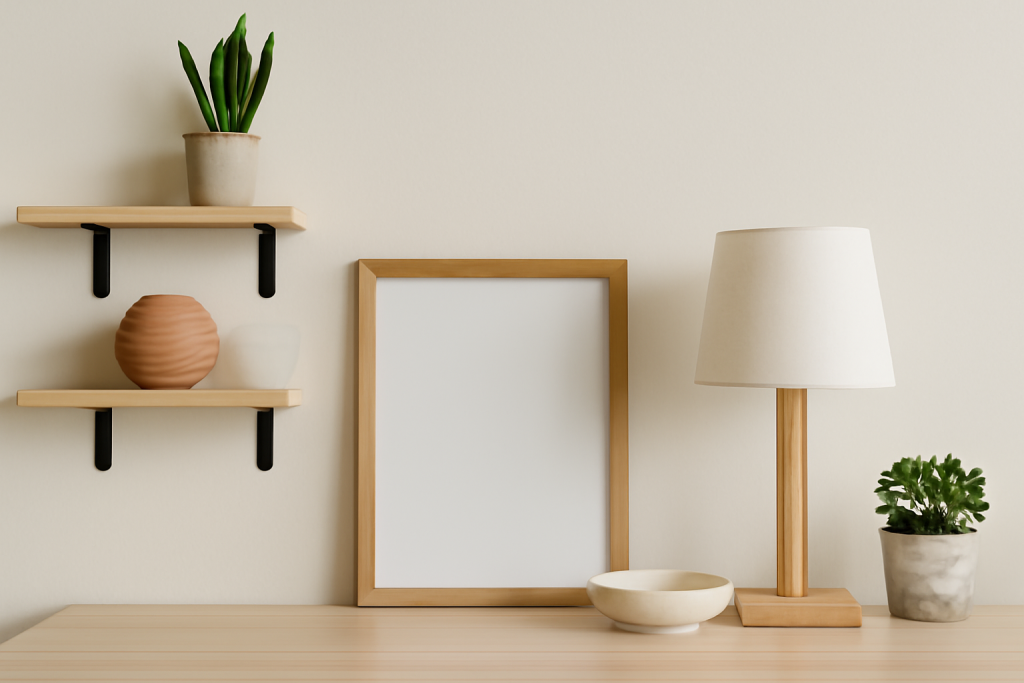Minimalist design is not just a trend—it’s a way to maximize function and style in your DIY crafts. By focusing on simplicity and practicality, you can create stunning pieces that serve a purpose without cluttering your space. Here’s how you can implement this approach in your own projects!

Why Minimalism Works in DIY Crafts
Minimalism is all about “less is more,” but its true beauty lies in how it seamlessly combines form and function. By stripping away unnecessary elements, minimalist design creates clean, functional, and visually appealing items. In DIY crafting, this philosophy can transform ordinary projects into timeless pieces that last longer and serve a practical purpose.
The Rise of Minimalism in Crafting
In recent years, minimalism has become a dominant force in the crafting world. With its focus on decluttering both physical and mental spaces, DIY crafters are increasingly embracing minimalist principles. Whether you’re crafting home decor, furniture, or accessories, minimalist designs can elevate your work with their clean lines and simple structures.
According to a study by Brittany Dailey Design (2023), minimalist-inspired crafts lead to lower material costs, which appeals to budget-conscious DIYers looking to create affordable yet stylish designs (Dailey 2023). The reduced use of embellishments and unnecessary materials not only lowers expenses but also helps focus the viewer’s attention on the craftsmanship itself. (Dailey 2023)
Key Elements of Minimalist DIY Design
When embarking on minimalist DIY projects, consider the following key elements to achieve both style and function:
- Neutral Color Palettes: Stick to whites, blacks, grays, or subtle earth tones. These colors provide a timeless look that pairs well with any room’s decor.
- Simple Geometric Shapes: Use basic shapes like squares, circles, and triangles for everything from furniture to home decor. These shapes add structure while maintaining a clean aesthetic.
- Functional Simplicity: Your DIY projects should have a purpose. Focus on items that are practical, like storage solutions or multi-functional furniture, while keeping the design as simple as possible.
- Natural Materials: Wood, stone, and metals are central to minimalist design. These materials not only provide aesthetic beauty but also enhance durability, ensuring your DIY pieces are built to last.
Examples of Minimalist DIY Craft Projects
If you’re wondering where to start, here are a few minimalist DIY project ideas that combine both style and function:
- Wooden Floating Shelves
Floating shelves are not only stylish but also maximize vertical space in any room. By using natural wood and sleek metal brackets, you can create an effortlessly minimalist piece that serves as both storage and decor. You can find materials at local craft stores, or even repurpose old furniture for this project. - Concrete Planters
Using concrete to make planters offers a perfect balance of minimalism and practicality. The grayish tone of concrete complements nearly any space, and its durable nature makes it ideal for indoor or outdoor use. Simply mold the concrete into your desired shapes, add a layer of sandpaper for smoothness, and place your favorite plants inside. - Modern Minimalist Table
A clean, functional table can be one of the best minimalist craft projects. Use simple wood and steel, or even concrete, to create a dining table or coffee table that maximizes utility without overcomplicating the design. Add some hidden storage, and you’ve got a perfect blend of simplicity and function. - Minimalist Wall Art
Create striking yet simple wall art by using materials like canvas, wood, or metal to design abstract, geometric pieces. Use clean lines, subtle textures, and neutral colors to create an art piece that draws attention without overwhelming the space.
How to Save With Minimalist DIY
Minimalist designs aren’t just about visual appeal—they’re also a budget-friendly approach to crafting. By focusing on quality over quantity, you’ll save on materials, tools, and time. You don’t need excessive decorations or unnecessary embellishments to make a statement. Keep your costs low by choosing high-quality materials that provide both beauty and durability.
For example, sourcing raw wood for your projects can reduce costs and minimize waste. Furthermore, repurposing old items such as jars, wooden pallets, or fabric remnants can lead to stunning, unique pieces for a fraction of the cost of new materials. In fact, Minimalist Design Innovations (2022) noted that recycled materials often work best in minimalist crafts, providing both environmental benefits and cost savings for creators. (Minimalist Design Innovations 2022)
Minimalism and Sustainability
Sustainability is a significant part of the minimalist movement, and DIY crafts are no exception. By focusing on fewer materials that are higher in quality, you’re reducing waste, which is a major win for the environment. Additionally, by creating long-lasting items instead of cheap, disposable ones, you’re contributing to a more sustainable approach to consumerism.
The focus on durable, high-quality materials reduces the need for frequent replacements, making minimalist crafts a long-term solution. Projects like wooden furniture or hand-built shelves often outlast their mass-produced counterparts, offering both aesthetic and environmental benefits.
Tips for Crafting with Minimalism in Mind
To truly embrace minimalist design in your crafts, follow these handy tips:
- Plan Before You Craft: Before starting, think about the function of the item you’re making and what materials are absolutely necessary.
- Invest in Quality Materials: Instead of buying many items, invest in a few quality pieces that will serve a purpose for years.
- Avoid Overdesigning: Resist the urge to overcomplicate your projects with unnecessary decorations. Let the form and materials speak for themselves.
- Focus on Versatility: Choose designs that work well in multiple settings or can be used for more than one purpose.
Minimalism encourages creators to focus on the essentials. By embracing these principles, your DIY projects will not only be functional and stylish but also environmentally friendly and budget-conscious.
Minimalist Design as a Lifestyle
Adopting minimalist design in your DIY projects can quickly become a lifestyle choice. The principles of simplicity and functionality can extend beyond crafts into your daily routines. From decluttering your living spaces to simplifying your schedule, embracing minimalism can lead to a more organized, fulfilling life.
Through DIY projects, you can gradually shift your mindset to prioritize quality over quantity in every aspect of your life. For example, if you’re crafting home decor, think about how each piece fits into your home’s overall design. Is it adding value, or just filling space? Minimalism helps answer this question by focusing on the essentials and reducing unnecessary clutter.
Conclusion
Minimalist design in DIY crafts is more than just an aesthetic trend; it’s a powerful way to blend style and function. By embracing simplicity, you can create beautiful, lasting pieces that serve a purpose without overwhelming your space. Whether you’re new to crafting or a seasoned pro, minimalist projects offer endless opportunities for both creative expression and practicality.
As you explore the world of minimalist DIY, remember that less is often more. Focus on the functionality of your designs, choose quality materials, and let the beauty of simplicity guide your projects. Whether crafting furniture, home decor, or art, the minimalist approach can transform your DIY endeavors into something both meaningful and timeless.
References:
- Dailey, B. (2023) The Power of Minimalist Crafting: Function Meets Style. Brittany Dailey Design. Available at: https://www.brittanydaileydesign.com (Accessed: 31 July 2025).
- Minimalist Design Innovations (2022) Sustainable Crafting: Minimalism and Environmental Responsibility. Minimalist Design Press. Available at: https://www.minimalistdesigninnovations.com (Accessed: 31 July 2025).
- Smith, J. (2024) Embracing Minimalism in DIY Projects: A Beginner’s Guide. Crafting Today. Available at: https://www.craftingtoday.com (Accessed: 31 July 2025).









